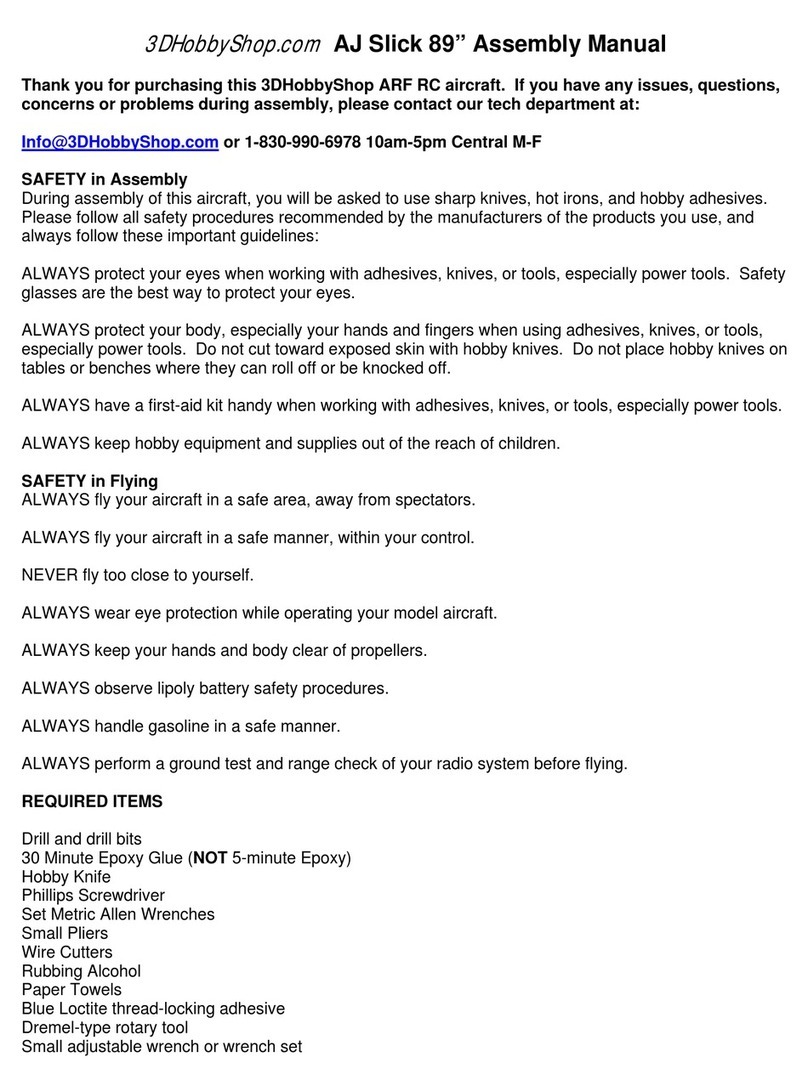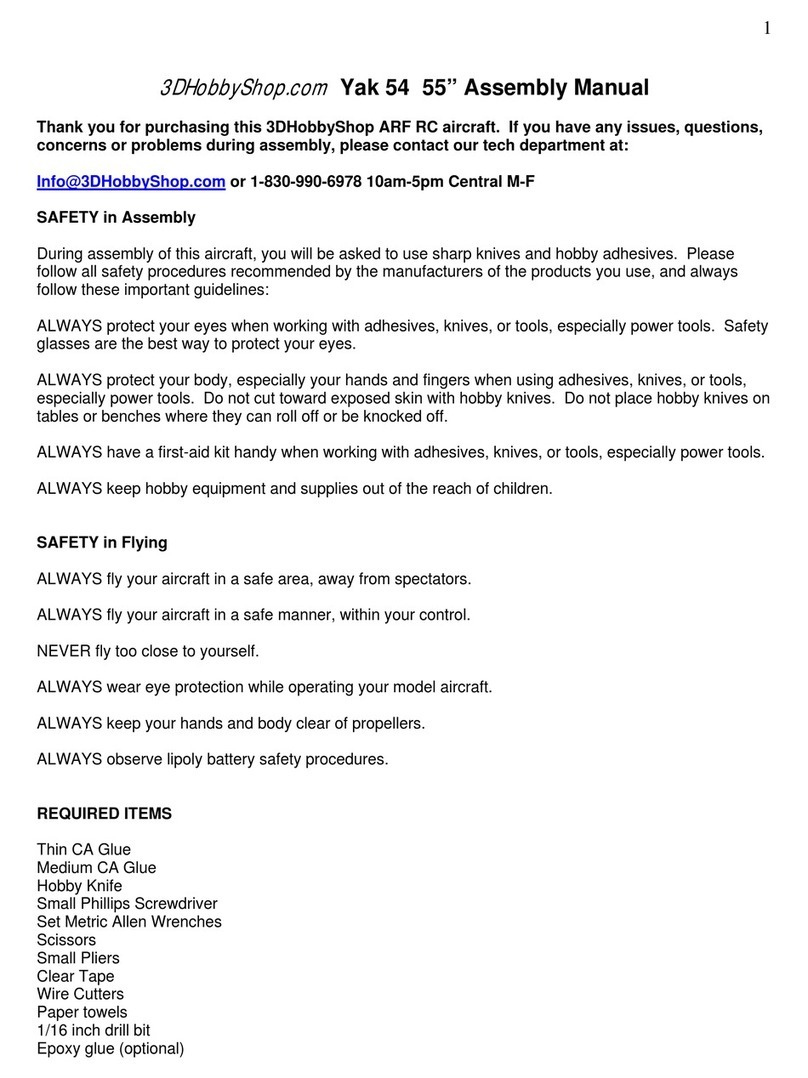
1
3 D H O B B Y S H O P . C O M
Assembly Manual
Vyper 46” ARF
Thank you for purchasing this 3DHobbyShop ARF RC aircraft. If you have any issues, questions,
concerns or problems during assembly, please contact our tech department at:
We highly recommend www.RCGroups.com as a good source for RC tips, tricks, and information.
SAFETY in Assembly
During assembly of this aircraft, you will be asked to use sharp knives and hobby adhesives. Please
follow all safety procedures recommended by the manufacturers of the products you use, and always
follow these important guidelines:
ALWAYS protect your eyes when working with adhesives, knives, or tools, especially power tools. Safety
glasses are the best way to protect your eyes.
ALWAYS protect your body, especially your hands and fingers when using adhesives, knives, or tools,
especially power tools. Do not cut toward exposed skin with hobby knives. Do not place hobby knives on
tables or benches where they can roll off or be knocked off.
ALWAYS have a first-aid kit handy when working with adhesives, knives, or tools, especially power tools.
ALWAYS keep hobby equipment and supplies out of the reach of children.
IMPORTANT NOTE – We strive to provide the absolute best-quality ARF aircraft on the planet. However,
the ultimate success or failure of this aircraft is dependent upon proper assembly by you. If you have
questions about an assembly step, please contact us, or read the assembly thread for your airplane on
RCGroups.com before proceeding. It is always better to slow down and be sure of your assembly than to
rush through it and make a mistake which can cause a crash.
SAFETY in Flying
SAFETY NOTICE: This is NOT a toy! It is a very high-performance RC airplane capable of high speeds
and extreme maneuvers. It should only be operated by a competent pilot in a safe area with proper
supervision.
ONLY fly your aircraft in a safe, open area, away from spectators and vehicles–and where it is legal to fly.
NEVER fly over an unsafe area, such as a road or street.
NEVER fly near overhead power or utility lines. If your airplane ever becomes stuck in a line or a tree DO
NOT attempt to retrieve it yourself. Contact the authorities for assistance in retrieving your aircraft.
Power lines are DANGEROUS and falls from ladders and trees CAN KILL!
Never fly too close to yourself or spectators. Spinning propellers are DANGEROUS!
Never run your motor inside a house or building with the propeller attached – Remove the prop for safety.
Always fly within your control.





























